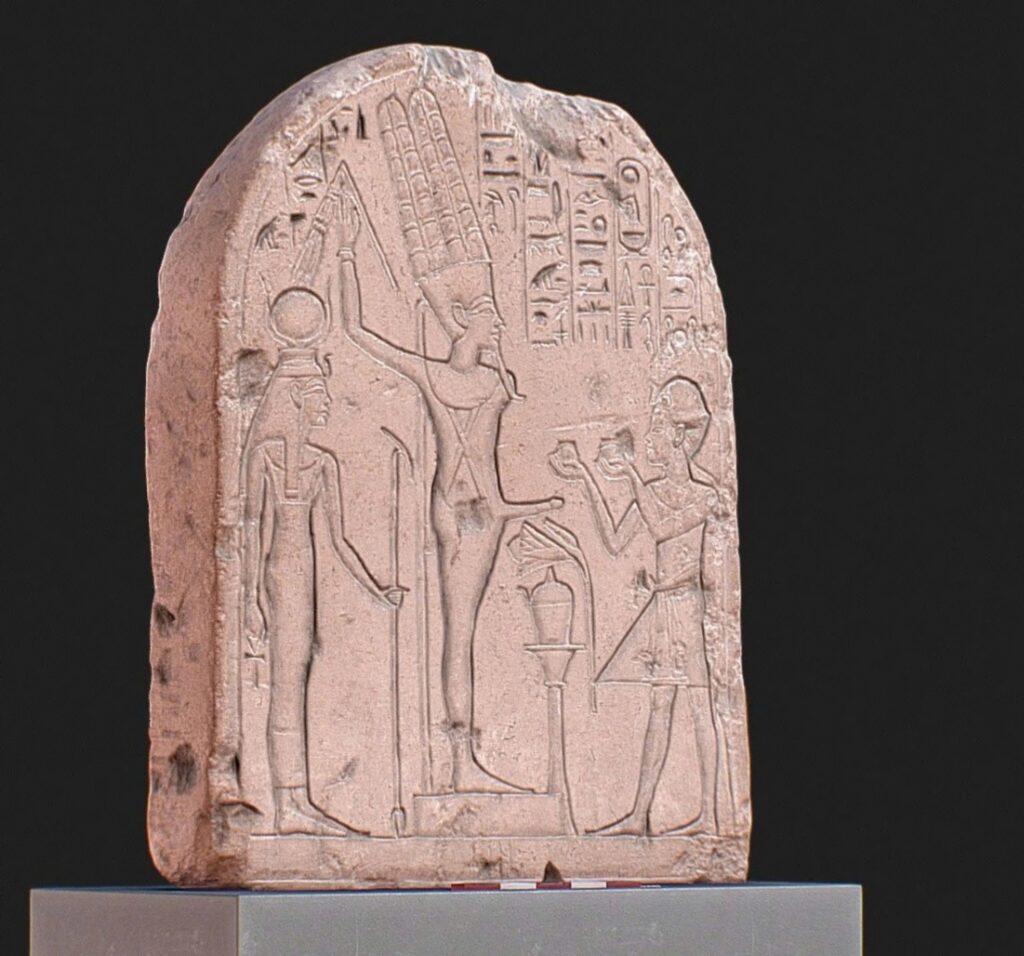Rediscovering a Forgotten Pharaoh

In the annals of ancient Egyptian history, few stories are as captivating as the posthumous resurgence of King Ahmose. This tale of royal resurrection spans nearly two centuries and showcases the intricate interplay of politics, religion, and art in the land of the pharaohs.
The Mysterious Stele of Ahmose
At the heart of this story lies a remarkable artifact – a beautifully carved stone stele commemorating King Ahmose, the founder of Egypt’s illustrious 18th Dynasty. Though Ahmose reigned from 1539 to 1515 BC, this stele was crafted much later, during the reign of the boy-king Tutankhamun (1332–1323 BC).

The stele’s creation coincided with a pivotal moment in Egyptian history. Following the controversial reign of Akhenaten, who had abandoned traditional polytheism in favor of worshipping a single sun deity, Tutankhamun’s era saw a return to orthodoxy. This included the reinstatement of royal cults, among them that of King Ahmose at the sacred city of Abydos.
A Window into Ancient Egyptian Art and Religion
The stele’s intricate relief carving offers a treasure trove of insights for both art historians and religious scholars. It depicts King Ahmose, his name encircled in a royal cartouche, presenting ritual nw-pots to two deities: Amun-Kamutef and Isis.

Ahmose is portrayed in regal splendor, wearing the distinctive Blue Crown (Khepresh) adorned with a cobra (uraeus), along with a broad collar and short kilt. Before him stands an offering table bearing a libation jar crowned with lotus flowers – symbols of rebirth and regeneration.
The god Amun-Kamutef, whose name means “bull of his mother,” appears in his ithyphallic form – a potent symbol of fertility and regeneration. Beside him stands Isis, one of Egypt’s most beloved goddesses, holding the was-scepter of power and the ankh symbol of eternal life.
A Lesson in Egyptian Royal Ideology
This stele is more than just a beautiful work of art – it’s a powerful statement of royal ideology. The accompanying hieroglyphic text proclaims Ahmose as “The King of Upper and Lower Egypt, Lord of Action, Lord of Appearances,” emphasizing his divine right to rule over a unified Egypt.
The very creation of this stele, long after Ahmose’s death, speaks to the enduring power of royal cults in ancient Egyptian society. It demonstrates how later pharaohs sought to legitimize their own rule by connecting themselves to illustrious predecessors.
The Lasting Legacy of King Ahmose
As we gaze upon this ancient stone, we’re reminded of the complex tapestry of Egyptian history. King Ahmose, who led Egypt out of a period of foreign domination and into a new era of imperial greatness, continued to inspire reverence and devotion long after his death.

This stele stands as a testament to the cyclical nature of Egyptian thought – where the past was constantly reinvented to serve the needs of the present, and where a pharaoh’s legacy could be as enduring as the stone upon which it was carved.
